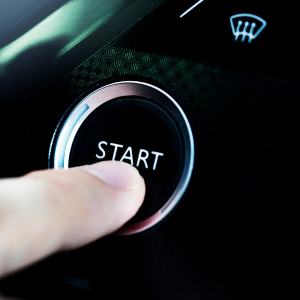Why Are Auxiliaries So Important?
Auxiliaries help verbs convey when an action happens and how it happens. For example, when you talk about something happening now, or something that was completed before, auxiliaries make this clear.
1. Simple Tenses: The Basics of Action
- Present Simple: Uses the auxiliary “do” to form negatives and questions.
- Positive: I drive to work.
- Negative: I don’t drive to work.
- Question: Do you drive to work?
- Past Simple: Uses “did” for negatives and questions.
- Positive: I drove yesterday.
- Negative: I didn’t drive yesterday.
- Question: Did you drive yesterday?
EngDrive Insight: For positive sentences in the simple tenses, there’s no need for an auxiliary, but “do” and “did” are essential for questions and negatives!
2. Continuous Tenses: The Action in Progress
For actions happening right now or around a certain time, you need the auxiliary “be” in its various forms.
- Present Continuous: Uses am/is/are + verb + ing.
- Positive: I am driving to work.
- Negative: I am not driving right now.
- Question: Are you driving now?
- Past Continuous: Uses was/were + verb + ing.
- Positive: I was driving when it started raining.
- Negative: I wasn’t driving at that moment.
- Question: Were you driving then?
- Future Continuous: Uses will be + verb + ing.
- Positive: I will be driving at 6 p.m.
- Negative: I won’t be driving tomorrow evening.
- Question: Will you be driving at 6 p.m.?
EngDrive Tip: Think of continuous tenses as your car engine running while you’re still in motion. The auxiliary “be” keeps it going smoothly!
3. Perfect Tenses: Reflecting on the Past
Perfect tenses are all about looking back at actions from a certain point in time. Here, the auxiliary “have” comes into play.
- Present Perfect: Uses have/has + past participle to show actions connected to the present.
- Positive: I have driven 50 miles today.
- Negative: I haven’t driven yet.
- Question: Have you driven this morning?
- Past Perfect: Uses had + past participle for actions completed before another past action.
- Positive: I had driven to work before the meeting started.
- Negative: I hadn’t driven that far before.
- Question: Had you driven before the rain started?
- Future Perfect: Uses will have + past participle for actions completed by a future time.
- Positive: By tomorrow, I will have driven 100 miles.
- Negative: I won’t have driven 100 miles by then.
- Question: Will you have driven by 6 p.m.?
EngDrive Wisdom: Perfect tenses act like your car’s rearview mirror. They help you see past actions clearly, with “have” marking the completion of an action!
Quick Recap: The Tense-Auxiliary Connection
- Simple Tenses: Use “do” or “did .
- Continuous Tenses: Use forms of “be” (am, is, are, was, were) .
- Perfect Tenses: Use forms of “have” (have, has, had).
By connecting these auxiliaries to tenses, you’ll navigate English grammar like a pro, with your sentences in full gear! Ready to hit the road?

